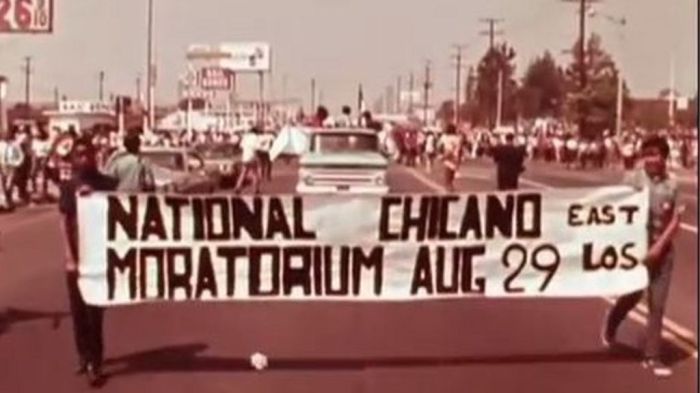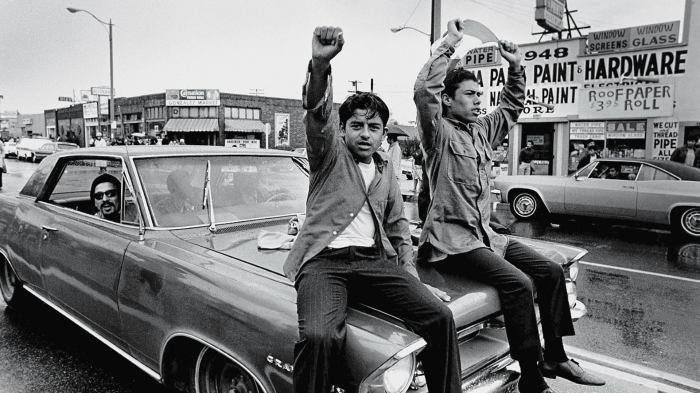Chicano fighting for political power – The Chicano movement’s struggle for political power has been a defining force in American history, shaping the nation’s political landscape and empowering a marginalized community. This essay delves into the historical context, political strategies, and lasting impact of the Chicano movement, exploring its ongoing challenges and opportunities.
Historical Context

The Chicano movement, also known as the Mexican-American civil rights movement, emerged in the 1960s as a response to the historical oppression and discrimination faced by Mexican Americans in the United States.
The movement’s roots can be traced back to the Mexican Revolution of 1910, which sparked a wave of immigration to the United States. Mexican Americans faced widespread discrimination and segregation in their new country, with limited access to education, housing, and employment opportunities.
Origins of the Chicano Civil Rights Movement
The Chicano civil rights movement gained momentum in the 1960s, inspired by the successes of the African American civil rights movement. Chicano activists, such as César Chávez and Rodolfo “Corky” Gonzales, organized protests and campaigns to demand equal rights and opportunities for Mexican Americans.
One of the key goals of the movement was to challenge the systemic racism and discrimination that Mexican Americans faced in areas such as education, employment, and housing. Activists also fought for the right to vote, the right to speak Spanish, and the right to cultural self-determination.
Political Strategies

Chicano activists employed various political strategies to advance their goals of political empowerment and social justice.
One key strategy was community organizing, which involved mobilizing local communities to address issues such as housing, education, and employment. This strategy emphasized grassroots participation and collective action.
Electoral Politics
Chicano activists also participated in electoral politics, seeking to gain representation in local, state, and federal government. They ran for office, formed political organizations, and allied with sympathetic candidates to influence policy decisions.
Examples of Successful Campaigns
- Crystal City, Texas (1963):Chicano activists successfully elected a majority of Mexican American candidates to the city council, marking a significant victory in the fight for political representation.
- Los Angeles, California (1968):Chicano activists organized a grassroots campaign that led to the election of Antonio Villaraigosa as the first Mexican American mayor of the city.
Impact on Political Landscape: Chicano Fighting For Political Power

The Chicano movement had a profound impact on the political landscape of the United States. It led to increased political participation by Mexican Americans, the election of more Mexican American candidates to public office, and the passage of legislation that addressed the needs of the Chicano community.
One of the most significant ways in which the Chicano movement shaped the political landscape was by increasing political participation by Mexican Americans. Before the movement, Mexican Americans were largely excluded from the political process. They faced barriers such as poll taxes, literacy tests, and gerrymandering, which made it difficult for them to register to vote and run for office.
Electoral Success
The Chicano movement challenged these barriers and encouraged Mexican Americans to participate in the political process. As a result, the number of Mexican Americans registered to vote increased dramatically. In 1960, only about 25% of Mexican Americans were registered to vote.
By 1972, that number had increased to over 50%.
The increased political participation by Mexican Americans led to the election of more Mexican American candidates to public office. In 1960, there were only a handful of Mexican Americans serving in elected office. By 1972, that number had increased to over 100.
Policy Changes
The Chicano movement also led to the passage of legislation that addressed the needs of the Chicano community. In 1968, Congress passed the Bilingual Education Act, which provided funding for bilingual education programs in schools. In 1974, Congress passed the Equal Employment Opportunity Act, which prohibited discrimination in employment on the basis of race, color, religion, sex, or national origin.
The Chicano movement had a lasting impact on the political landscape of the United States. It led to increased political participation by Mexican Americans, the election of more Mexican American candidates to public office, and the passage of legislation that addressed the needs of the Chicano community.
Current Challenges and Opportunities

The Chicano community continues to face significant challenges in the realm of political power. One major obstacle is the persistent underrepresentation of Chicanos in elected office at all levels of government. This lack of representation limits the community’s ability to influence policy decisions that directly impact their lives.
Another challenge is the ongoing voter suppression efforts that disproportionately affect Chicano communities. These efforts include restrictive voter ID laws, limited access to polling places, and gerrymandering of electoral districts to dilute the voting power of Chicano voters.
Opportunities for Continued Political Empowerment, Chicano fighting for political power
Despite these challenges, there are also opportunities for continued political empowerment and representation for the Chicano community. One promising avenue is the growing number of Chicano candidates running for office. These candidates are bringing new perspectives and experiences to the political arena and are helping to break down barriers to entry for other Chicanos.
Another opportunity lies in the increasing civic engagement among Chicano youth. Young Chicanos are becoming more involved in politics and are demanding a voice in the decisions that shape their future. This activism is helping to create a more politically engaged and empowered Chicano community.
Quick FAQs
What were the key goals of the Chicano civil rights movement?
The movement sought to address issues of discrimination, poverty, and political disenfranchisement faced by Mexican Americans, advocating for equal rights, economic justice, and educational opportunities.
How did Chicano activists use political strategies to achieve their goals?
They employed a range of tactics, including grassroots organizing, voter registration drives, and strategic alliances with other civil rights groups, to mobilize support and influence policy decisions.
What impact did the Chicano movement have on the political landscape of the United States?
The movement’s advocacy and activism led to significant legislative changes, including the Voting Rights Act of 1965, and contributed to the rise of Latino political representation at all levels of government.
